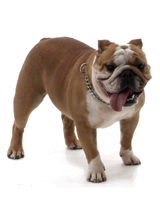| |

|
|
Avoiding Risky Situations
Here are some tips to avoid situations in which a dog could become aggressive.
Don’t act in a way that could make a dog feel threatened
- don’t force a dog into a corner or hug it tightly, always leave an easy way for a dog to get away from you
- don’t go into a dog’s territory (its home, garden or section, or car) unless the dog is secured or the owner is present to control the dog
- don’t go near a dog that is chained up, feeding, sleeping or with its puppies
- don’t handle a dog’s chew bones or food
- stay away from dogs that are showing mating behaviour
- don't tease or hurt a dog
- don’t approach, play with, pet or excite a strange dog
- don't make eye contact or try and pat a dog on its head or ears.
Don’t encourage chasing
- some dogs have a very strong instinct to chase. For some, chasing is play, for others it’s more like hunting prey.
- even though dog owners are legally responsible for keeping their dogs under control at all times, it’s better not to take chances. Avoid running, cycling or skateboarding close to a dog. It’s better to slow down and angle away from the dog, until you are well past and can speed up again safely.
- in public areas, dogs should be kept on a leash. If your children are playing close to an unrestrained dog in a public area, you should use your judgement about the situation. If the dog owner is present, you can ask the owner to keep the dog on a lead. If you remain concerned, you can contact Your Council Dog Control office.
Share space with dogs sensibly
Your Council has the power to designate
- dog exercise areas (where dogs do not need to be leashed, but must be under voice or hand control at all times)
- tracks and reserves where dogs are allowed
- areas where hunting permits are required
- areas where dogs must be kept on a leash,
- areas where dogs are not allowed either at all or at certain times.
You can find out about these areas by contacting Your Council or by seeing signs on designated areas.
If you wish to avoid dogs, or to let young children play freely without needing to supervise their play around dogs, it’s sensible to avoid designated dog exercise areas.
Be safe when walking your dog
- carry a walking stick and/or some dog treats - both can be used to distract an approaching aggressive dog
- if the owner is nearby ask them to put their dog on a leash
- if you see a dog off a leash, move away and go in the opposite direction
- be prepared to loosen or drop your dog's leash - your dog may be in a better position to protect itself or to show the body language to stop the attack
- moving in front of your dog and yelling a loud "no" at the other dog can help break eye contact and distract the aggressor dog.
|

